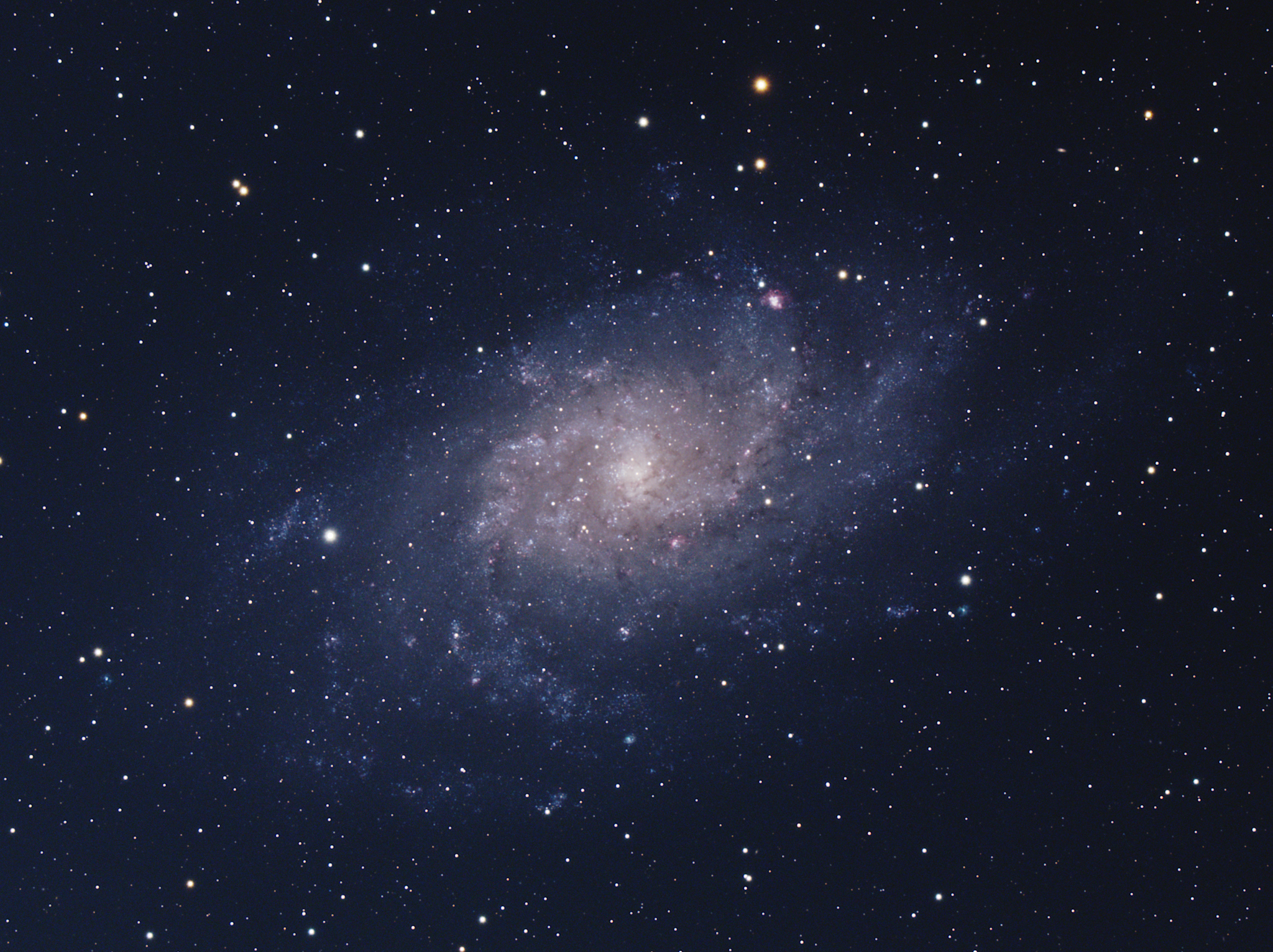A Tale of Many Islands: Getting to Know the Neighborhood

|
| Triangulum Galaxy (Messier 33): Taken under Michigan skies November, 2021. |
If you haven't already, read this post first: A Tale of Many Islands. To recap, I mentioned the historic milestone where Edwin Hubble produced evidence confirming the existence of other galaxies by measuring the distance to the Andromeda Galaxy (Messier 31). With this new method in measuring distances and with the old single-galaxy worldview no longer holding us back, we embarked on a journey to grasp the true nature and structure of the universe.
Massive achievements in astronomical data collection, radio telescopes and earth-orbiting telescopes paved the way for scientists to begin modeling our universe. Leveraging statistical grouping methods, galaxies are clustered together based on their observed locations and velocities. The Milky Way belongs to what we refer to as the Local Group. This is our most basic galactic neighborhood. There are thirty galaxies that belong to the Local Group and they spread out over a diameter of 10 million light-years. The three largest galaxies of our Local Group (from largest to smallest) are: Andromeda, Milky Way and Triangulum. It is possible that the Triangulum galaxy will play some role in the eventual collision of the Andromeda and Milky Way galaxies.
A Humbling Perspective
The Local Group is a small cluster located on the outskirts of the much larger Virgo Supercluster. The Virgo Supercluster contains between 1,200 and 2,000 galaxies. Most of these galaxies are being gravitationally pulled into the heart of the Virgo Supercluster where they will be consumed. Our Local Group lies just outside the so called 'capture zone' so the Milky Way will not become part of the Virgo Cluster's core.
When we take a step farther back, the Virgo Supercluster becomes a small part of a much larger superstructure called the Laniakea Supercluster. The Laniakea (Hawaiian word meaning 'immense heaven') contains about 100,000 galaxies. If we think of the Virgo supercluster as living in the the Laniakea Supercluster then the superclusters Hydra, Centaurus, Abell-3565 and Abell-3574 superclusters are just a few of Virgo's neighbors.
There are millions of superclusters in the observable universe. These clusters appear to form a spectacular web of sheets and filaments. If we were only to consider the activity in the Virgo Supercluster, we are led to believe that the general trend is leading to an eventual collision of most galaxies. However, when we consider the larger Laniakea Supercluster that Virgo is a part of, we learn that galaxies are generally drifting away from each other. As far as astronomers know, the Laniakea Super cluster is not gravitationally bounded to any higher superstructure. The nearest neighbors to Laniakea are the Coma, Perseus-Pisces and Shapley superclusters but they are all drifting away from each other.
Our place in the Universe
It is estimated that there are on the order of 100 billion observable galaxies in the universe. Let's write this number out just so we get a feel for its immensity: There are at least 100,000,000,000 observable galaxies. Our local group of 30 galaxies makes up only a tiny fraction of what we can observe. To really grasp the significance here I wanted to make a comparison to the number of water drops in a standard 2 meters deep Olympic swimming pool.
Let's say there are 50 billion drops of water in an Olympic pool. That is 660,000 gallons of water where each gallon contains roughly 76,000 drops. Let's fix our scale so that the Olympic pool fully contains all 100 billion galaxies which would give us a ratio of 2 galaxies per drop. This also gives us 152,000 galaxies per gallon.
The Laniakea supercluster with 100,000 galaxies would take up 50,000 drops which is about two thirds of a gallon.
The Virgo supercluster with 2,000 galaxies would take up 1,000 drops which is 1.3% of a gallon or between 3-4 Tablespoons. You could fit about 70 Virgo superclusters in a single gallon.
The Local Group with 30 galaxies would take up only 15 drops. You could fit 20 Local Groups in just a single Tablespoon or fit 5,000 Local Groups in a single gallon.
The Milky Way galaxy takes up only one half of one drop. That is 0.17% of a Tablespoon.
A General Note
The numbers played around with above assume that each galaxy is created equally which is not the case. There is a variation in a galaxy's mass and even in volume in which it spans which I don't take into consideration. Another important aspect to keep in mind is that this analogy in no way considers the vast amounts of empty space which, in terms of volume, greatly shadows that of which is taken up by the matter in galaxies.
Also, it is important to understand what the phrase 'observable universe' really means. We can only see up to a certain horizon because light cannot travel infinitely fast. This means that we are limited in seeing only the light that has had enough time to reach our point of view. The light we observe today that is roughly 13.7 billion light-years away was emitted from matter 13.7 billion years ago. That matter has since been traveling the entire 13.7 billion years that have elapsed but we are just unable to see it: We are bounded by time!
I've greatly oversimplified things because I just wanted to focus on portraying scale as simply as possible. So if some of my information is off (which it most definitely is) the scale is the key thing I wanted you to take away from it all.
A great video illustrating Laniakea: https://sservi.nasa.gov/articles/laniakea-our-home-supercluster
Comments
Post a Comment